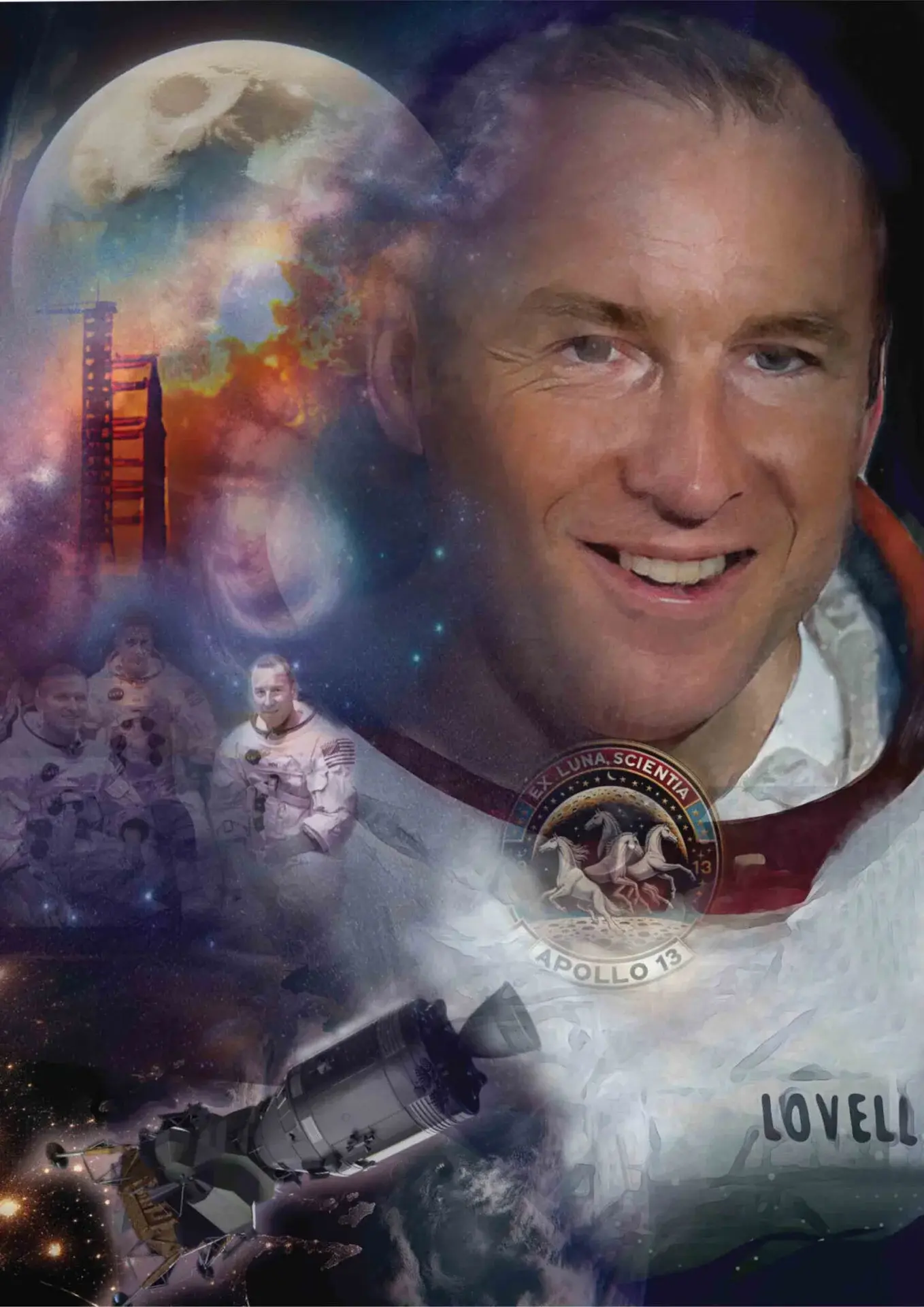On The Night of April 13, 1970: A Crisis in Space Unfolds.
By Bill Hinsch
At a little after nine Central Standard Time on April 13, 1970, a flare of light resembling an exploding star appeared in the western sky. Engineers at the Manned Spacecraft Center near Houston, Texas, noticed this light while tracking the Apollo 13 spacecraft, a day away from the moon and two days from a scheduled moon landing. Among these engineers was Andy Saulietis, who had rigged a telescope to a television set, enabling objects in the telescope’s field of view to appear on the screen. They lost sight of the spacecraft but were watching the booster rocket trailing it. After dumping its fuel, the booster appeared as a pulsing pinprick of light due to its tumbling motion.
Suddenly, a bright spot appeared on the TV screen, growing into a white disc the size of a dime over ten minutes. The rooftop observers, lacking a communications link with the nearby Mission Control Center, did not connect this light with the spacecraft. Unbeknownst to them, Apollo 13 had suffered a critical failure: one of its two oxygen tanks had burst, spewing 300 pounds of liquid oxygen into space, forming a rapidly expanding sphere. Within ten minutes, the glowing oxygen sphere reached thirty miles in diameter before disappearing.
Saulietis and his team assumed the white spot was a defect in their television set and thought nothing more of it. Meanwhile, Mission Control, oblivious to the spacecraft’s predicament, continued monitoring data from Apollo 13. The burst oxygen tank meant the loss of half the spacecraft’s supply for generating electricity and water, but no one in Mission Control realized the gravity of the situation immediately.
Inside Mission Control
Inside the Mission Control Center’s Operations Wing, the atmosphere was calm. The flight controllers, most in their twenties and thirties, were relaxed, having experienced smooth operations for the first fifty-five hours of the flight. They were even watching a television show broadcast by the astronauts, which none of the major networks had carried live. Captain James A. Lovell Jr., the spacecraft commander, and his crew members, John L. Swigert Jr. and Fred W. Haise Jr., appeared happy and composed during the broadcast.
Lovell gave a tour of the spacecraft, highlighting the command module Odyssey and the lunar module Aquarius. Swigert, the command module pilot, and Haise, the lunar module pilot, appeared focused on their tasks. The flight controllers in Houston found little to be concerned about, even joking about the many instances of the number thirteen appearing in the mission’s timeline.
The Explosion
Shortly after the television broadcast ended, a yellow caution light indicated low pressure in a hydrogen tank. Seymour Liebergot, the electrical engineer monitoring the spacecraft’s systems, asked the Flight Director, Eugene Kranz, to have the astronauts stir the hydrogen and oxygen tanks to get accurate readings. Kranz decided to wait until Haise had returned to the command module.
When Swigert received the message to stir the tanks, he pressed four switches. Sixteen seconds later, an arc of electricity shot between two bare wires in Oxygen Tank No. 2, causing a rapid rise in pressure. Within twenty-four seconds, the pressure blew the dome off the tank, and flames from the escaping oxygen spread through the service module. The explosion tore off a side panel of the service module, preventing a potentially catastrophic pressure buildup that could have blown off the command module itself.
The Immediate Aftermath
Swigert felt a shudder and reported, “Houston, we have a problem.” This calm statement belied the severity of the situation. Lovell heard a distinct bang, and Haise, emerging from the tunnel between the modules, felt the tunnel shake ominously. The master alarm sounded, indicating trouble with the electrical system.
Initially, the flight controllers, including Liebergot, did not grasp the full extent of the disaster. Telemetry data did not directly indicate the explosion but showed a cascade of problems that took time to interpret. The electrical system was compromised, with Main Bus B losing power and Main Bus A showing an undervolt.
Lovell asked Houston if they were still reading Apollo 13, to which the capcom, Jack Lousma, responded affirmatively but admitted they were still trying to understand the problem. Kranz, seeking recommendations from Liebergot, faced the challenge of piecing together the telemetry data to identify the source of the issue.
The Critical Moments
The realization that both main buses were failing led to the grim acknowledgement that the spacecraft was severely damaged. Haise’s mention of a large bang and Lovell’s observations of fluctuating oxygen levels pointed to a serious malfunction. Despite the initial confusion, the flight controllers worked diligently to diagnose the issue and develop a plan to bring the astronauts home safely.
As the situation became clearer, the focus shifted to ensuring the survival of the crew. The flight controllers had trained extensively for various scenarios, but this real-life crisis tested their skills and composure to the fullest. Their meticulous training, although not covering such a catastrophic failure, enabled them to respond effectively under pressure.
Conclusion
The events of April 13, 1970, demonstrated the incredible resilience and ingenuity of NASA’s engineers and astronauts. Despite the catastrophic failure of an oxygen tank, the teamwork between the flight controllers and the astronauts ensured the crew’s survival. The crisis of Apollo 13 remains a testament to human determination and the ability to overcome seemingly insurmountable challenges through collaboration and innovation. Jim Lovell passed into history as the essential astronaut on Apollo 13. Later played by Tom Hanks in the Ron Howard film. Last January my painting paying homage to Jim, now 93 and failing with dementia, was installed in the Ohio Statehouse Rotunda. Jim will be remembered there now for the ages. Long live the memory of this quintessential spaceman.


